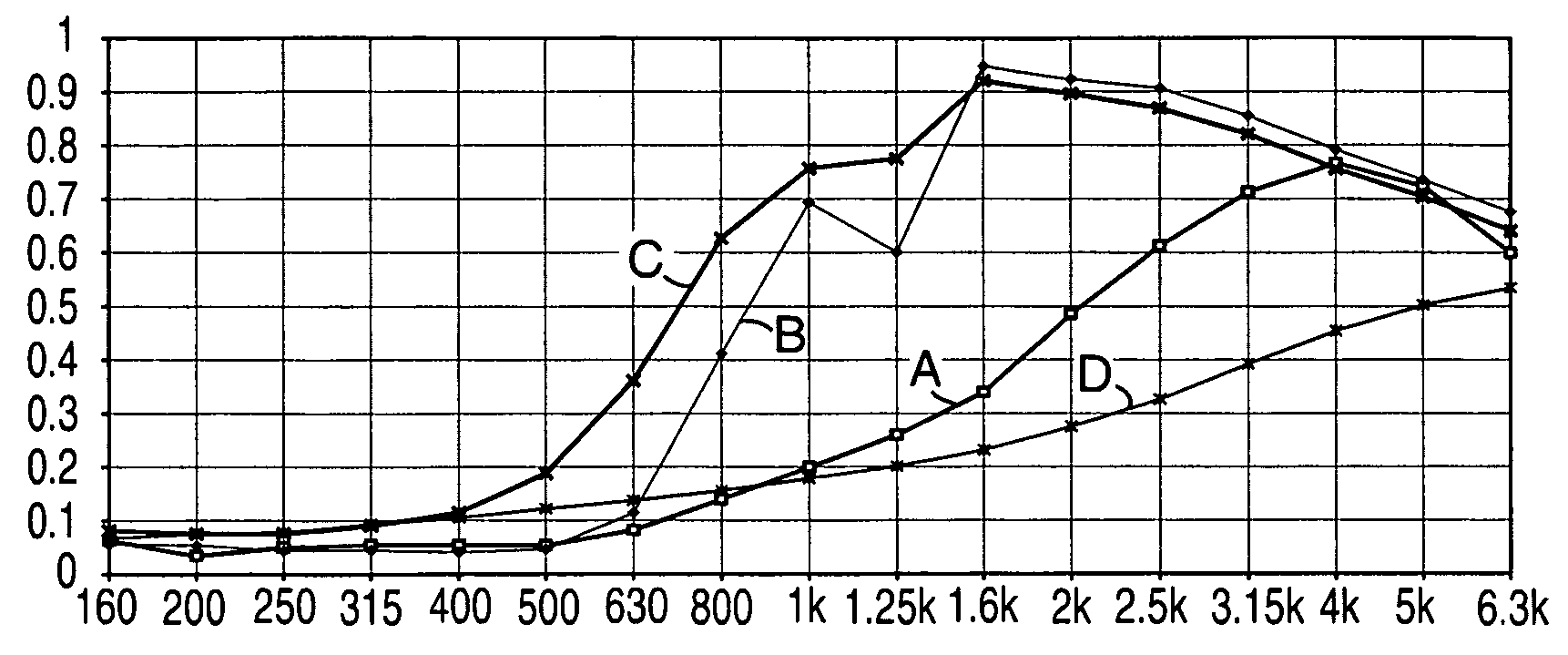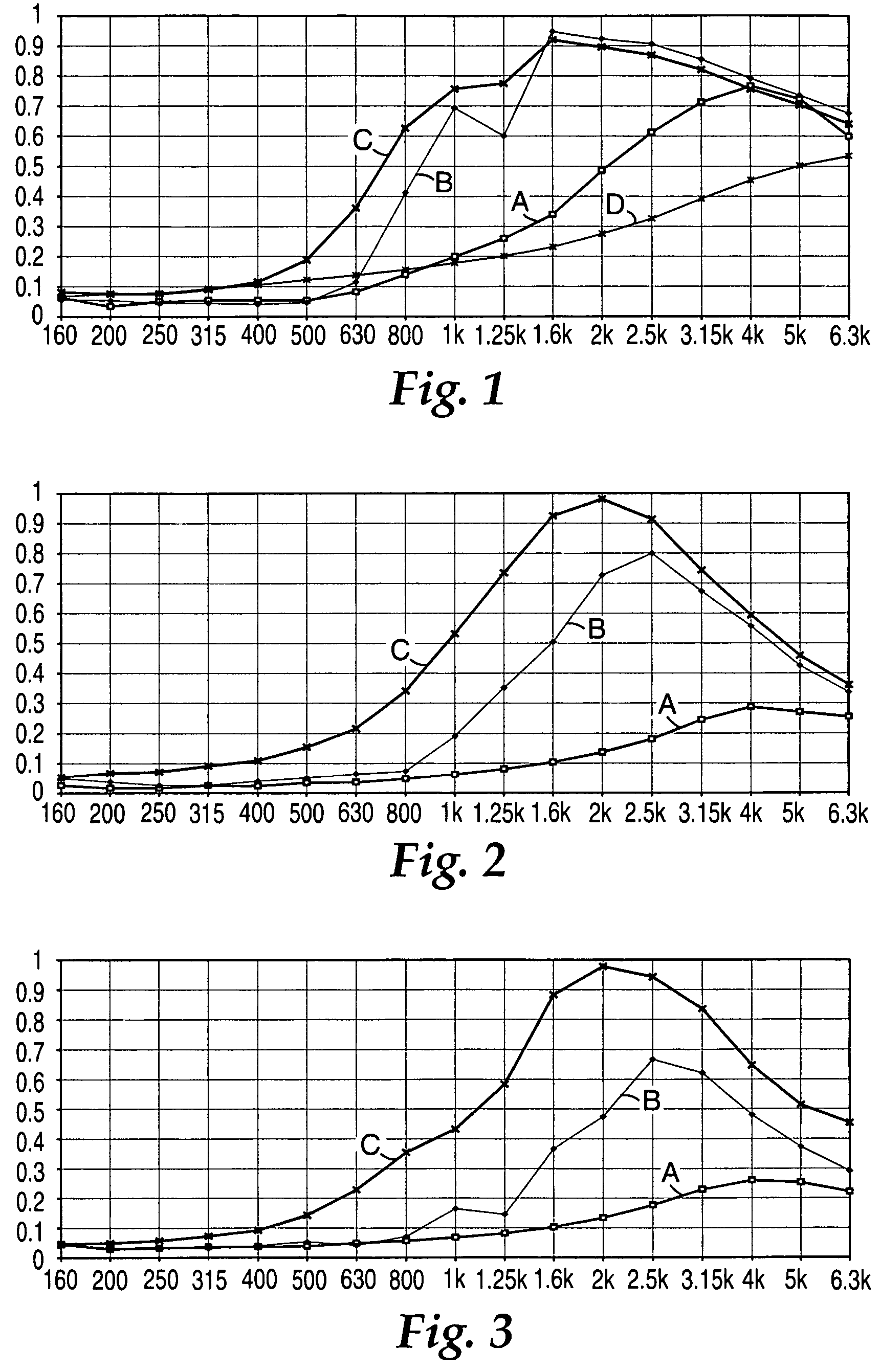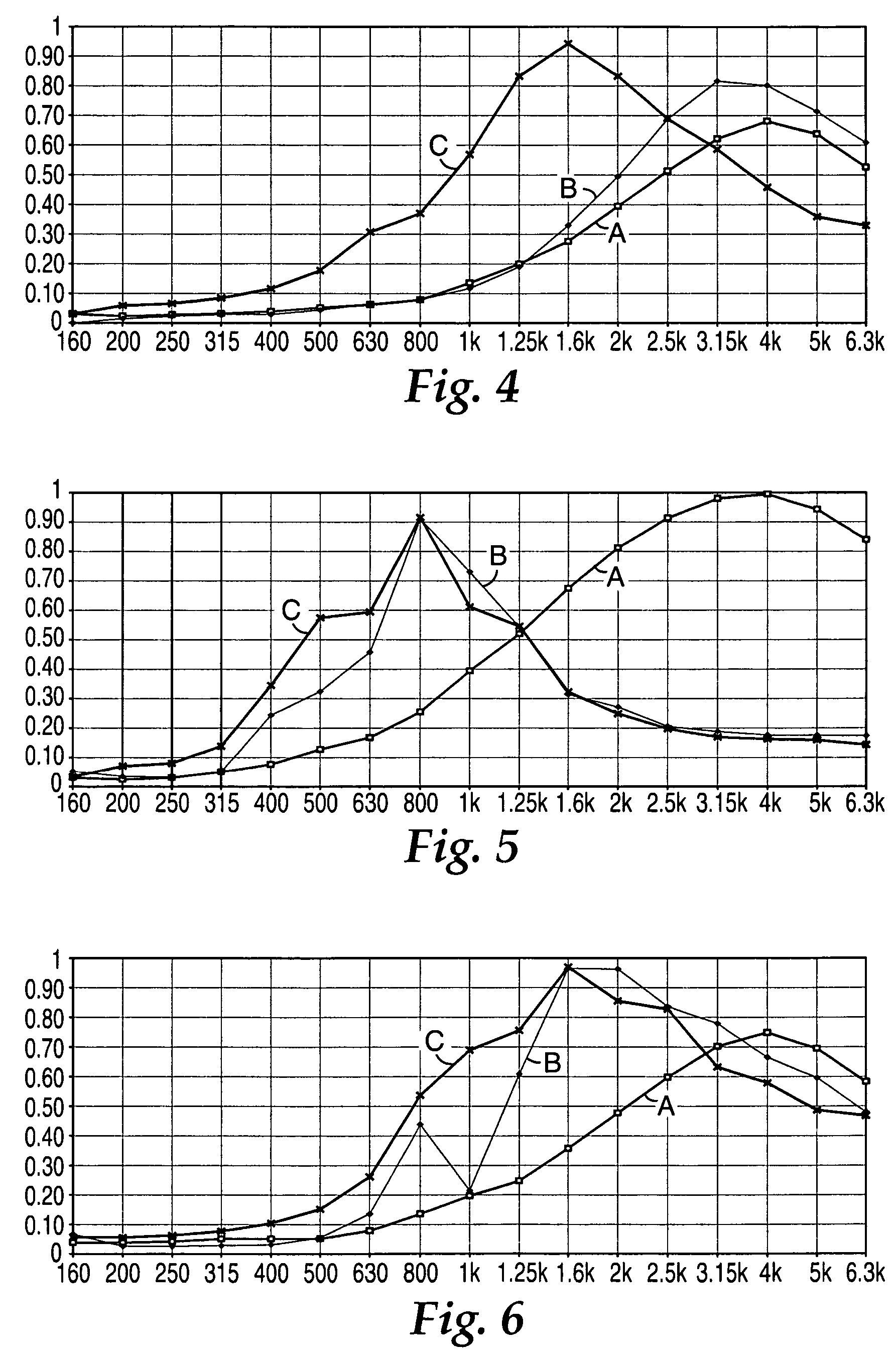Porous membrane
a porous membrane and membrane technology, applied in the field of thin porous membranes, can solve the problems of adding undesired cost and weight to the overall insulation packag
- Summary
- Abstract
- Description
- Claims
- Application Information
AI Technical Summary
Benefits of technology
Problems solved by technology
Method used
Image
Examples
examples 1-8
[0028]A variety of membranes of the invention were prepared and tested, as summarized in Tables 1-3 and in plots of data in FIGS. 1 to 8. The starting sheet material for each of the membranes in the examples was as follows:[0029]For Example 1, a spunbond nylon web (#G066380 supplied by Western Nonwovens).[0030]For Example 2, a spunbond polypropylene web (#83149006-01 supplied by BBA Nonwovens).[0031]For Example 3, a spunbond PET web (polyethylene terephthalate—Reemay Fabric, supplied by BBA Nonwovens).[0032]For Example 4, a meltblown polypropylene web containing fibers averaging 8 micrometers in diameter (EFD); the average actual diameter of the microfibers was less than about 10 micrometers.[0033]For Example 5, a meltblown polyurethane web of fibers having an average (EFD) diameter of 20 micrometers.[0034]For Example 6, a composite web of 65 weight % meltblown polypropylene fibers averaging (EFD) 8 micrometers in diameter and 35 weight % Veratec “Easy Street” cotton staple fibers.[...
examples 9-11
[0040]Examples 9-11 were prepared from a polypropylene SMS (spunbond / meltblown / spunbond web) that had a basis weight of 17 grams / square meter (0.5 oz / yd2) supplied by First Quality Nonwovens (FQN) as SM1700008. The described web was calendered between two smooth steel rolls using different conditions for each of Examples 9-11 as set forth in Table 2. Measurements and tests were conducted on the starting sheet material and completed membrane and results are presented in Tables 1 and 3. Sound absorption measurements were performed on the test membranes in combination with a useful acoustic insulating sheet material (Thinsulate™ Acoustic Insulation supplied by 3M, hereafter TAI, and as described in U.S. Pat. No. 5,298,694) which comprised 55 weight percent meltblown fibers and 35 weight percent crimped staple fibers. For further comparison, sound absorption measurements were performed on a laminar assembly (Comparative Example C1) comprising a commercial web weighing 51 grams per squar...
PUM
| Property | Measurement | Unit |
|---|---|---|
| thickness | aaaaa | aaaaa |
| thickness | aaaaa | aaaaa |
| thickness | aaaaa | aaaaa |
Abstract
Description
Claims
Application Information
 Login to View More
Login to View More - Generate Ideas
- Intellectual Property
- Life Sciences
- Materials
- Tech Scout
- Unparalleled Data Quality
- Higher Quality Content
- 60% Fewer Hallucinations
Browse by: Latest US Patents, China's latest patents, Technical Efficacy Thesaurus, Application Domain, Technology Topic, Popular Technical Reports.
© 2025 PatSnap. All rights reserved.Legal|Privacy policy|Modern Slavery Act Transparency Statement|Sitemap|About US| Contact US: help@patsnap.com



